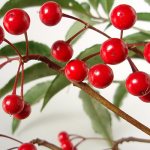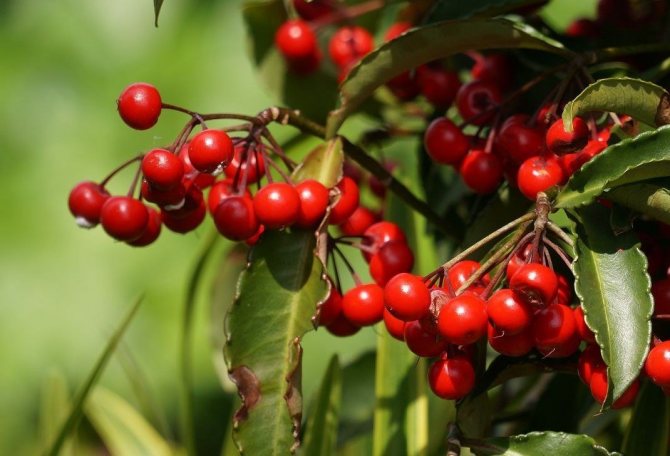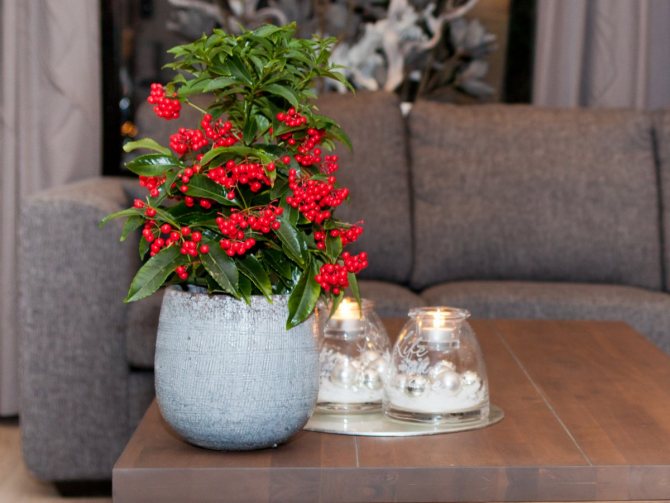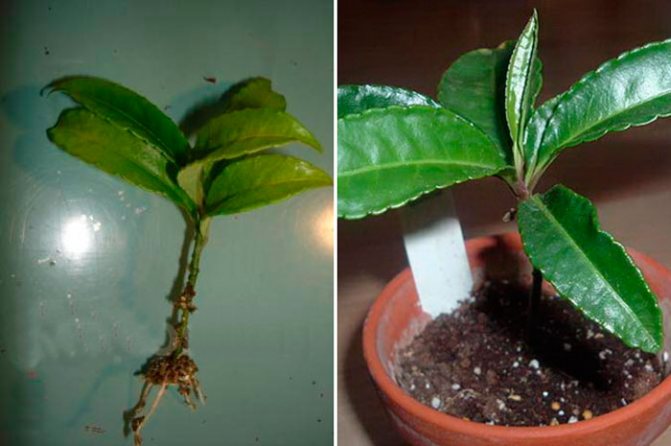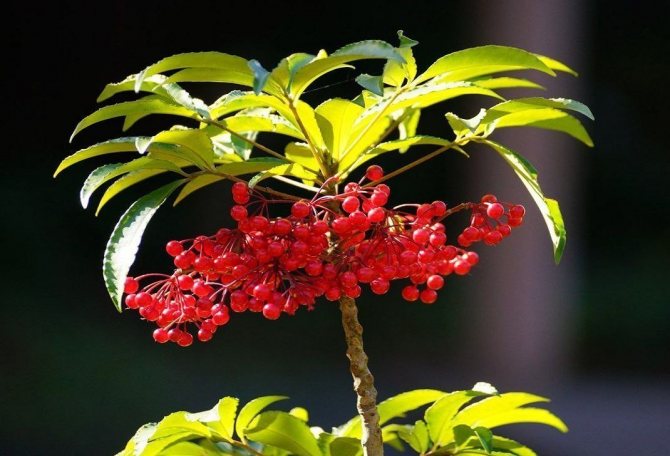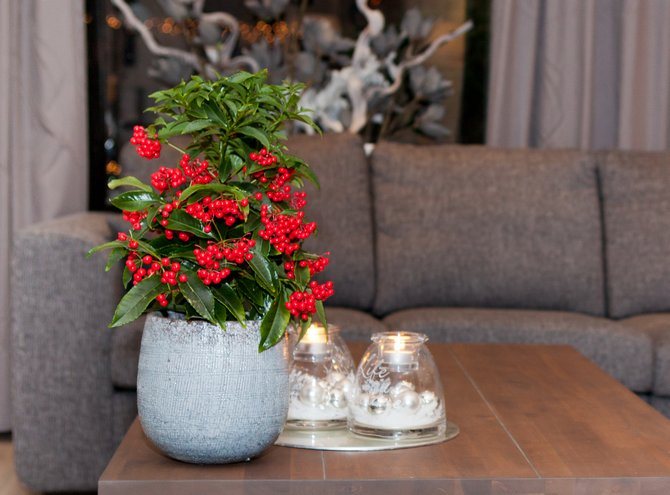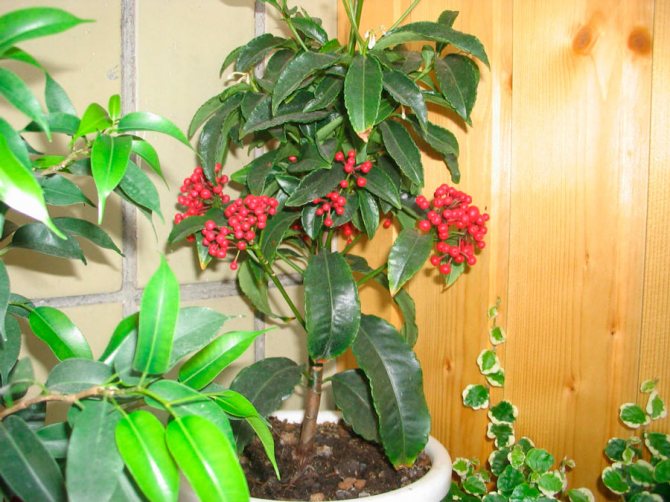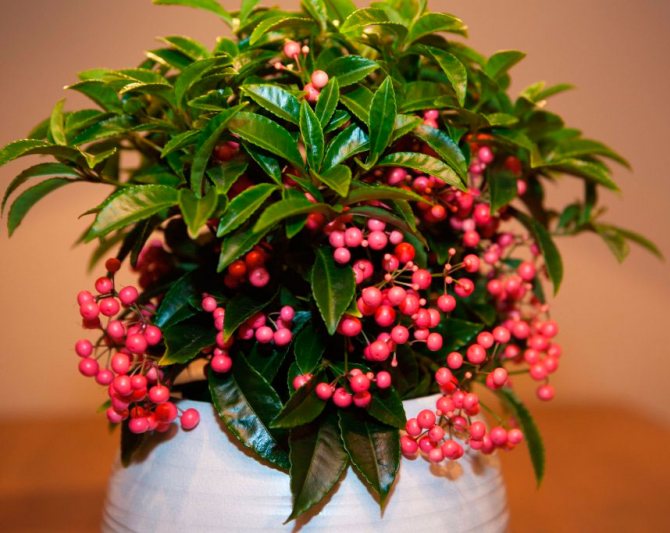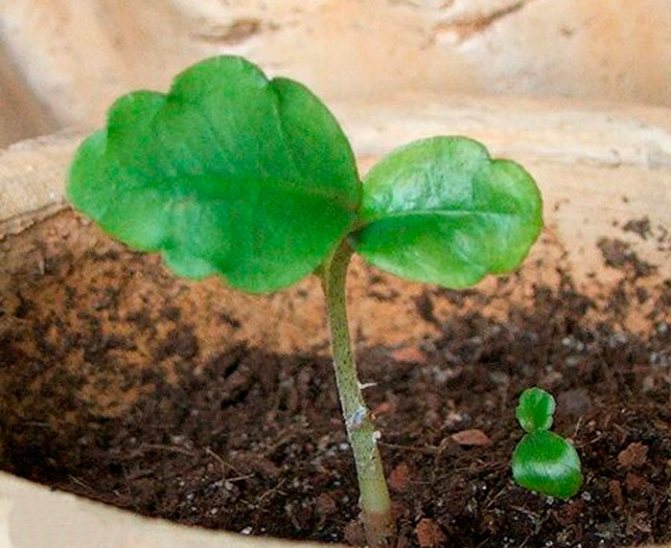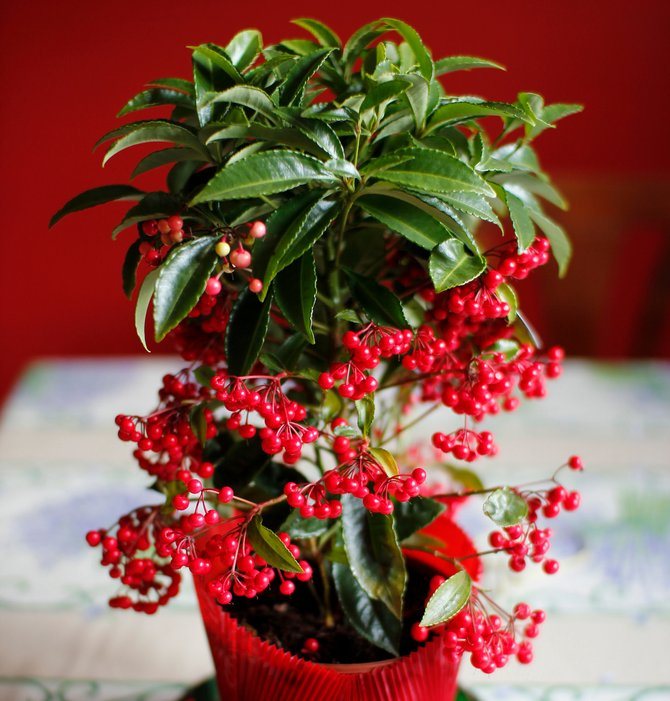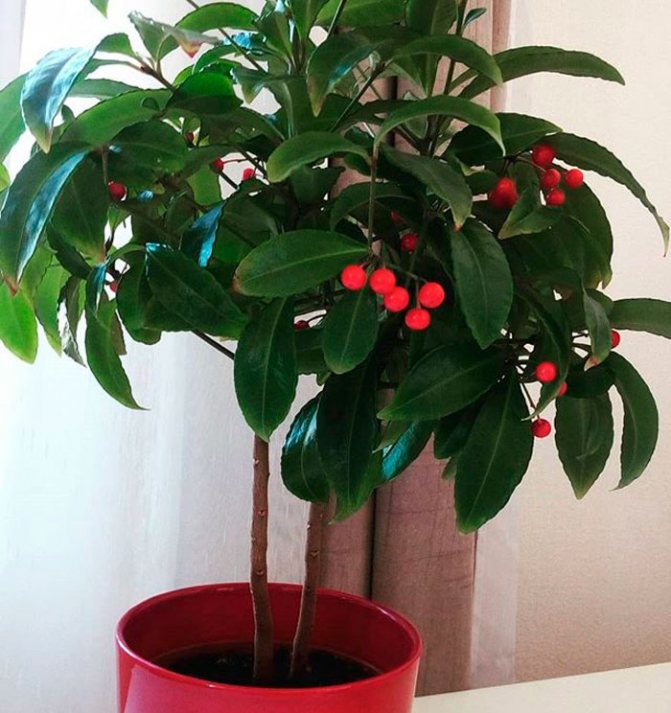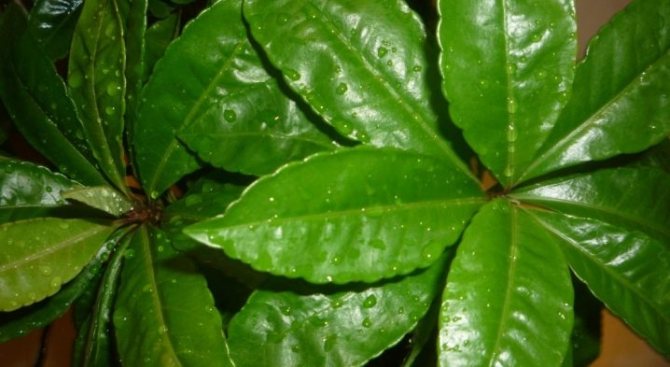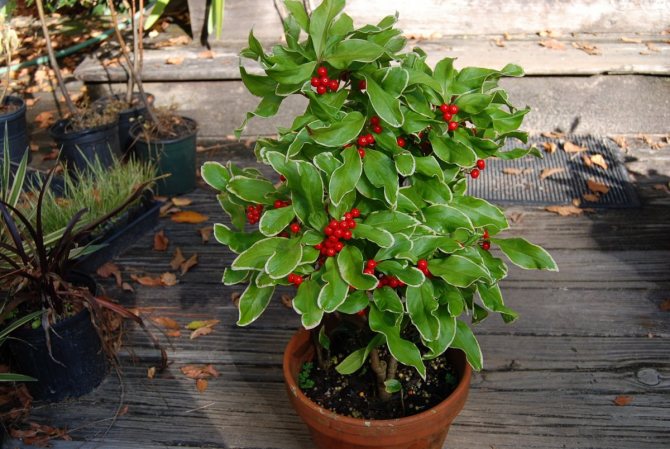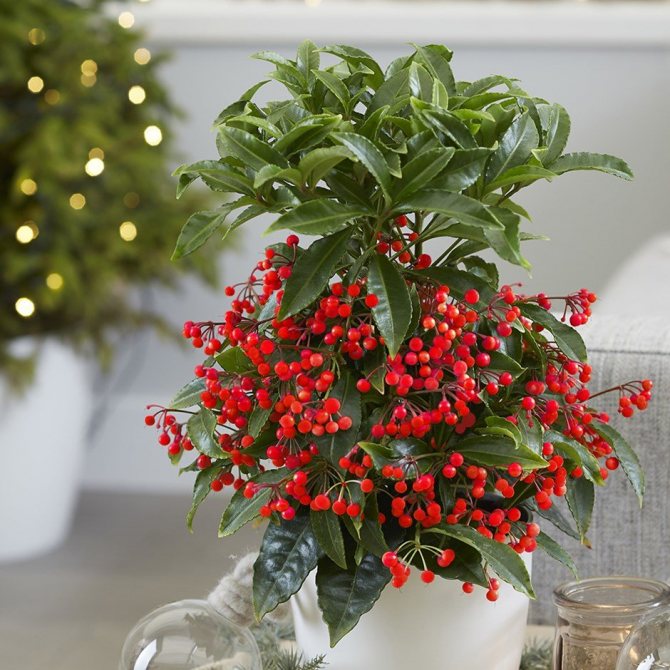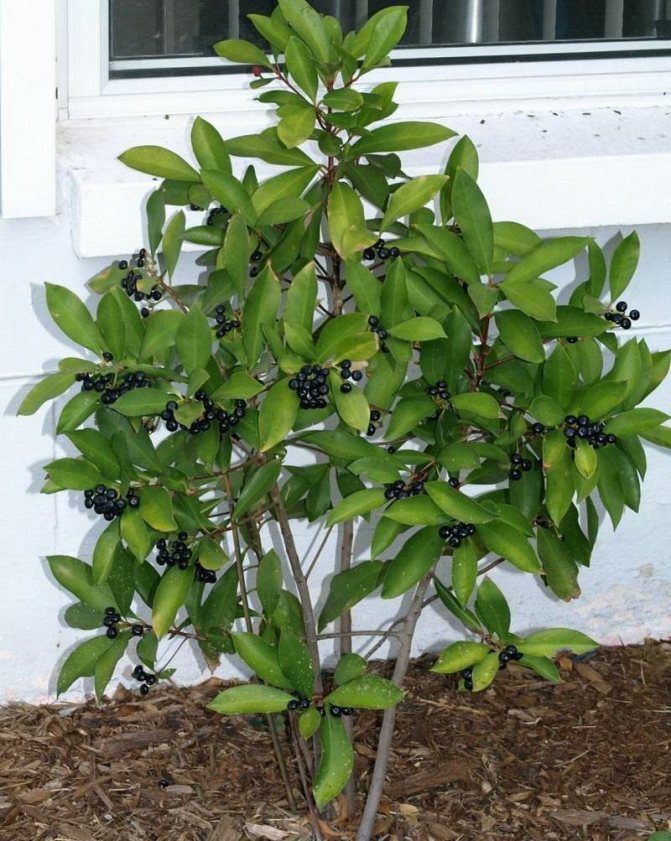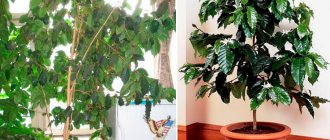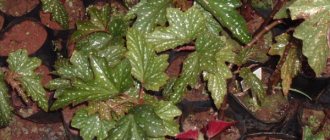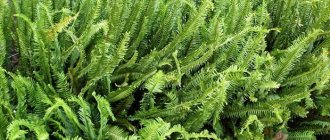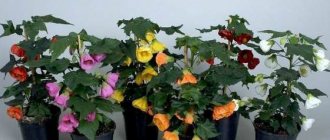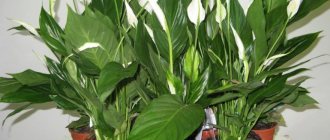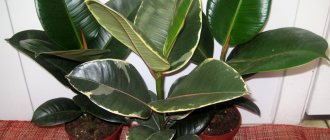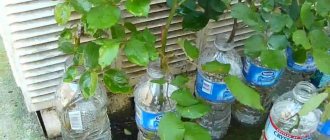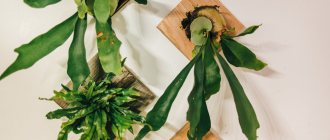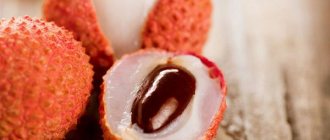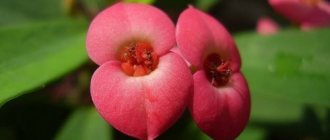The flowering tropical plant Ardisia is a member of the Myrsinoideae subfamily of the Primulaceae family. This plant in natural conditions can be found in South and North America, Australia, Asia, as well as on the islands of the Pacific Ocean. However, it prefers to grow in the tropics and subtropics.
This genus unites about 500 species (according to some sources, 800 species). Ardisia is represented by shrubs, trees and dwarf shrubs. Interestingly, Ardisia japonica is one of the fifty main medicinal plants in traditional Chinese medicine. As an ornamental plant, the most commonly used species is Ardisia crenata, which is also called "Christmas berry" or "coral tree".
Care rules
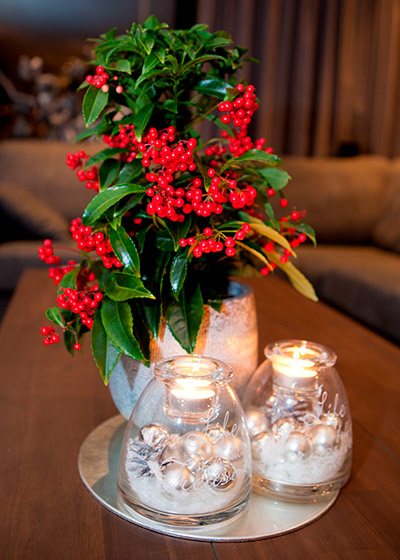
What should be the care of a flower?
Once you've bought this plant, take a close look at it at home again. Make sure there are no harmful insect larvae in the store substrate. If any, be sure to replace the primer. The second important point is that the ardisia pot should be tight. If you bought this houseplant in a spacious pot, then it is better to replace it with a small one so that the ardisia bloom faster.
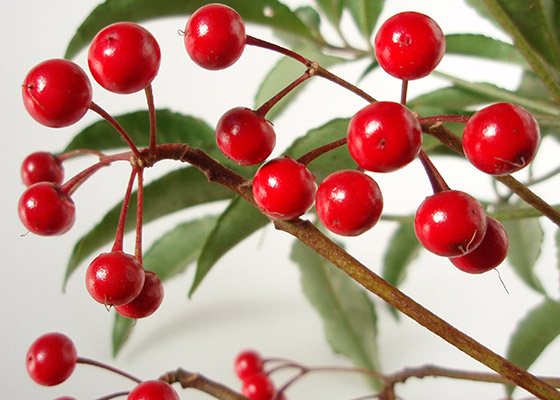

This southern plant needs a lot of light. However, a long stay in direct sunlight is undesirable for him. Place the pot on the windowsill on the south side of the room, but place a protective shield in front of the tree crown. However, you can do without a screen if you place an Ardisia flower on the east side of the room.
Coral wood does not tolerate heat and drafts.
Adult curly ardisia grows slowly, so it is necessary to transplant it into a new pot no more often than every three years. Transplant only when the roots of the plant no longer fit in the pot. Try replanting ardisia in the spring. Young trees are transplanted by flower growers annually, as they develop much faster.
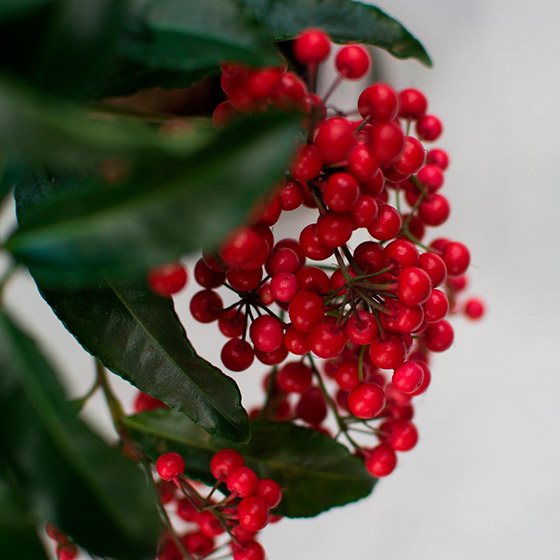

When transplanting, remove the earthen lump without undue effort so as not to damage the roots. Christmas berry is unpretentious to the composition of the soil. The tree will develop normally in any fertile soil.
The pot is another matter. If it is too spacious, then all the strength of the tree will go to the development of the root system. That is, ardisia will postpone its flowering until its roots become cramped in the pot.
Do not forget to equip a drainage layer at the bottom of the pot when transplanting. Expanded clay or foam crumbs are traditionally used for it.
Photo gallery
Ambient humidity
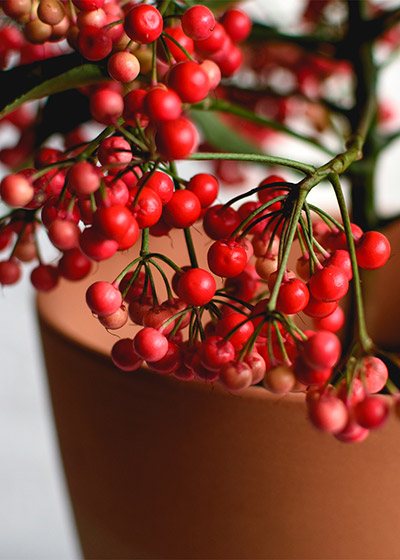

Often people worry: why isn't the coral tree blooming? Ardisia can bloom and set red berries, provided that the humidity of the ambient air is at least 60%.
Such humidity in our houses is far from always, so if you want to wait for flowering, regularly spray the bush with water from a spray bottle. The water should be at room temperature or slightly warmer.
As soon as your tree blooms, stop spraying immediately. If the air in the room is dry, then place a container of water next to the ardisia. Its vapors are quite enough to maintain a comfortable moisture for the flower.
Ardisia. Growing problems and pests.
Ardisia does not bloom.Treatment: Provide the plant with extra moisture and sunshine in the spring, before bud formation begins. Spraying it regularly with warm water will help increase the humidity in the air around it.
Ardisia drops buds and berries. Reason: Drafts or cold air. Ardisia loves coolness, but not cold. Make sure that the temperature in winter does not drop below 10 ° C.
Ardisia is a plant prone to damage by scale insects, scale insects, thrips and spider mites.
Flowering and fruiting
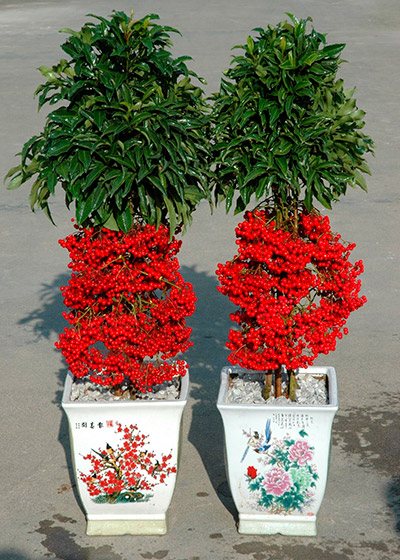

With careful care, flowers and berries on ardisia flaunt for a long time, there are always a lot of them. Her flowers are small, they can be white or pink. They are collected in inflorescences.
If, during the flowering period, the ambient temperature drops below 12 degrees, then all the flowers will fall off, and the fruit ovary will not occur. Pollination of flowers occurs naturally, but at the same time it can be made compulsory. To do this, use a regular soft brush.
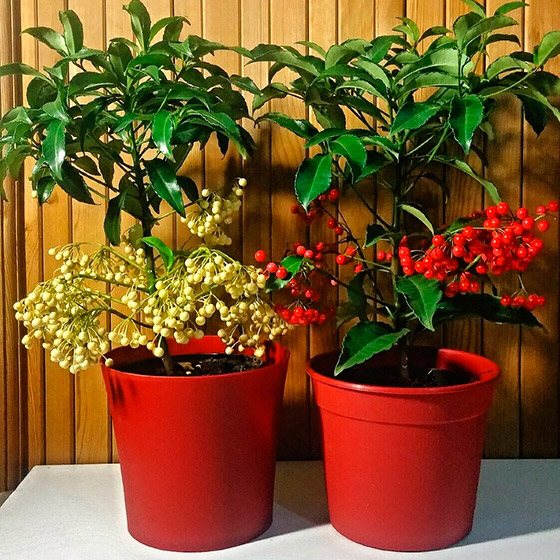

Outwardly, the fruits resemble mountain ash brushes. It should be remembered that during the ovary of fruits, ardisia needs additional feeding - fertilize the soil under it every two weeks with any complex fertilizers.
Ardisia tolerates pruning and pinching well. They are held in the spring. After the beginning of flowering, this cannot be done. Procedures can be gentle or drastic. Ardisia tolerates both easily.
What to do right after buying ardisia
It is worth purchasing a plant in November-December, when ardisia is actively bearing fruit. The plant needs to adapt to new living conditions. Quarantine the Christmas tree (separate from your other plants). Keep the air temperature low and water moderately, do not place near heating systems. During the adaptation period, the lower leaves may be dumped - it is worth watering the plant a little more often, but without frills. It is important to inspect for pests or diseases. After a couple of weeks, the tree is transplanted by the transshipment method.
Reproduction
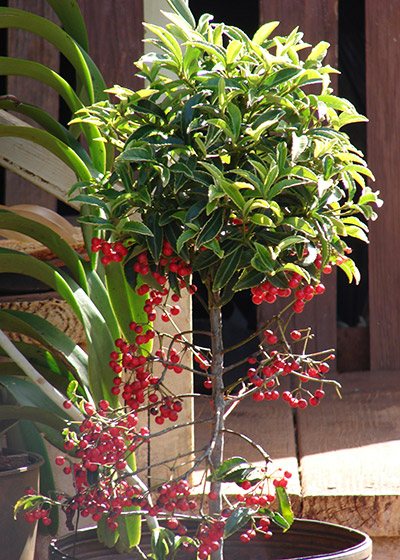

How does ardisia reproduce? Seeds or cuttings.
Seeds are best taken from the largest and healthiest fruits that are already fully ripe. Before planting in the soil, soak the seeds in a growth stimulator for a day. After that, they can be planted in the ground. This should be done in the second half of winter.
In addition, seed reproduction can take place naturally. After ripening, the fruits of ardisia fall into the soil under it, the strongest seeds germinate there. It is enough to carefully remove the young sprouts from the soil and transplant them into separate cups. When the sprouts begin to grow actively, they can be planted in pots.
For cuttings, you can use the tip of any branch of ardisia. Rooting of cuttings takes a very long time, so cuttings should be treated with any root growth stimulant. It is best to germinate cuttings in a waterlogged substrate or sand. If the room temperature is below 25 degrees, then rooting may not occur.
Magical properties
- The ancient Greeks believed in the miraculous power of coral jewelry, believing that the magical properties of the mineral can prolong life and protect against disasters.
- For its external resemblance to a powerful symbol that gives soldiers strength and courage, and girls beauty and health, magnificent ardisia is popular among indoor plants.
- A flower grown at home has a beneficial effect on the human psyche and protects against the evil eye.
- Each plant in the house has a certain energy and creates a comfortable atmosphere, cleansing the space around it.
You should not decorate the nursery with a coral tree because of the glossy mouth-watering berries that the baby will certainly want to taste.
Other features of the flower
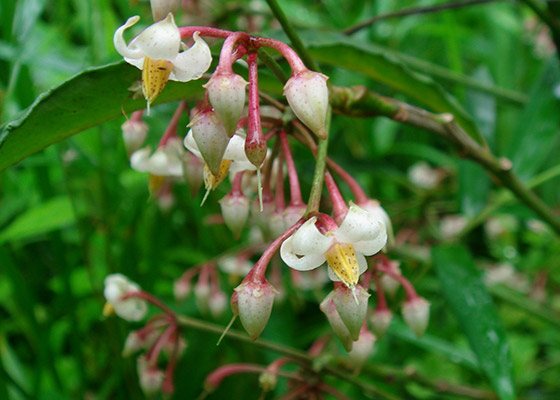

Of course, everyone is wondering what kind of berries are in ardisia - are they edible or not? The juice of this plant is not toxic, but the berries are not suitable for eating, since they are completely tasteless.
Ardisia develops in alliance with beneficial microorganisms. They live on the leaves of the tree in small colonies in the form of small growths or nodules. Inexperienced growers believe that these are signs of a disease.
In fact, on the contrary, this is a sign of plant health, and these nodules, or rather, colonies of beneficial microorganisms, help the plant to assimilate nutrients from the soil.
Types of ardisia
Ardisia crenata (Ardisia crenata)
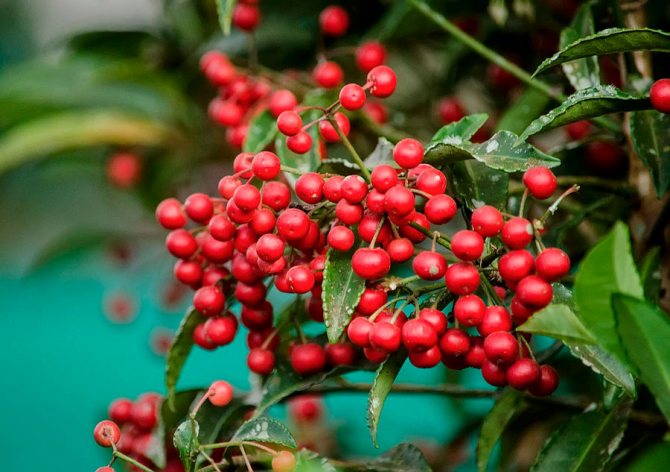

This type is most popular with flower growers. The bush is slow growing, and its height does not exceed 200 cm. Glossy leathery leaf plates have a wavy edge and a dark green color. Instead of flowers that can be pink or white, coral-red fruits are formed in winter. Fruiting can last continuously throughout the year.
Ardisia curly (Ardisia crispa)
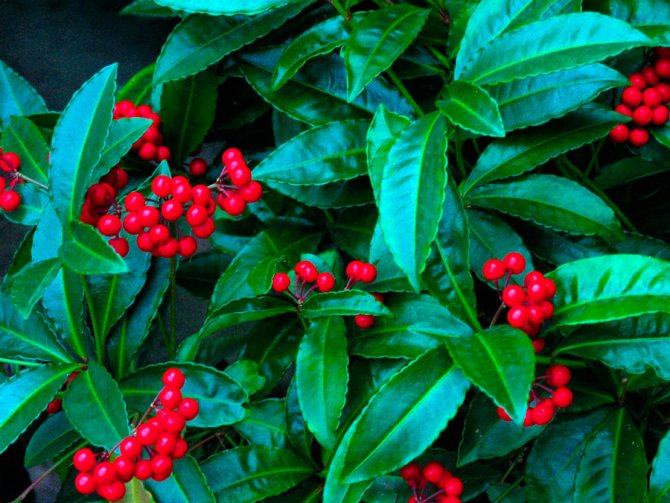

The height of the bush is about 0.6-0.8 m. Dark green shiny leathery leaf plates have a wavy edge. Lush flowering. A large number of white flowers are formed on the stems, while on the shoots of the previous year there are still round fruits of a coral-red color.
Ardisia low (Ardisia humilis)
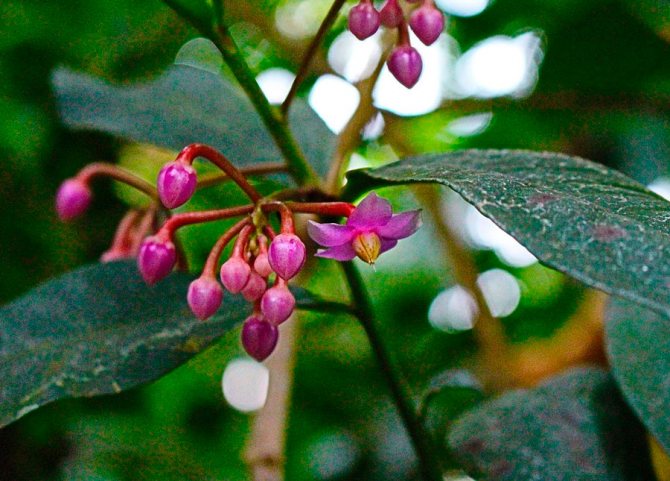

The size of the bush is less than that of curly ardisia. The length of the dark green leathery leaf plates can vary from 5 to 15 centimeters. Paniculate drooping inflorescences consist of small pinkish flowers. At first, the fruits are colored reddish-brown, but over time they become black and shiny.
Ardisia solanacea (Ardisia solanacea)


The shoots of the bush are light red, and the leathery leaf plates of a pale green color are not as wide as those of ardisia low and curly. Under natural conditions, this species is a tree, the height of which is 1.5–6 m. The flowers are painted in lavender or pink, they do not represent any decorative value. In place of the flowers, fruits appear, which are initially painted in a pale red color, over time they darken and become shiny.
Ardisia elliptic (Ardisia elliptica)
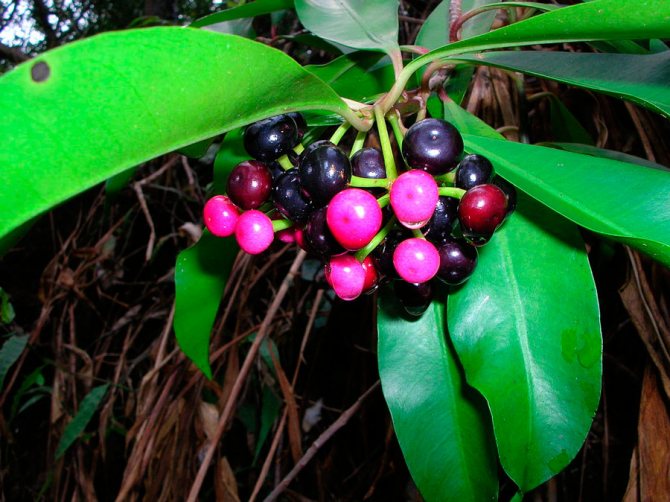

In the United States, Hawaii, Australia and the Caribbean, this species is very popular, where it is cultivated as a garden ornamental plant. The color of the flowers is pinkish. At first, as they ripen, the berries turn red, and later this color gradually changes to a rich purple. This type of ardisia is used in alternative medicine as an antimicrobial agent.
Crown formation
Ardisia is beautiful due to the unique combination of two parts of the crown - the lower one, consisting of red berries, and the upper leaf part. Pruning shoots will help to achieve a beautiful crown shape. Thanks to it, not only "extra" shoots are removed, but also the division of shoots is stimulated. Pruning makes the crown lush and not too tall. Plants are pruned in March and April.
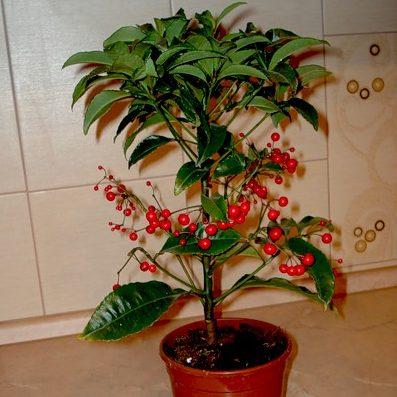

What is she
Like most flowerpots fashionable today, ardisia was brought from the tropics of America. It is also common in the forests of Asia, Australia.
The name of the genus is translated from Greek as "arrow" - indeed, the flowers of the plant resemble miniature arrows.
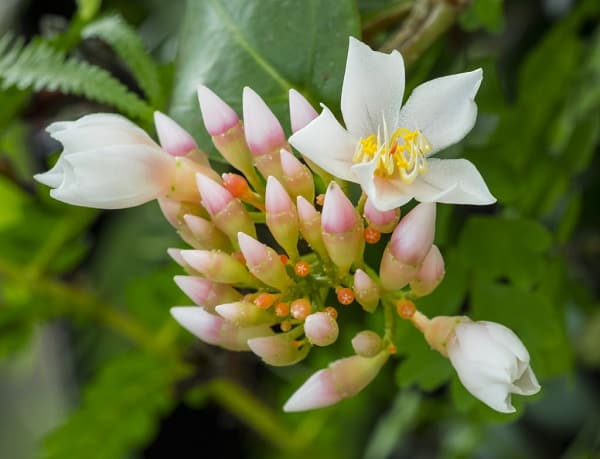

They appear in mid-December (although, depending on the variety, they can bloom in other seasons - late spring, mid-summer). Most often, their small petals are white, sometimes pink.
Very quickly they are replaced by berries, for which, in fact, the tree is grown. They can be at first white or pinkish, but then they become scarlet (less often black - it depends on the type of ardisia).
The berries ripen for several months, leaving one seed by themselves.
The leaves also look interesting. They have the shape of a glossy boat with slightly wavy edges. Often, swellings can be felt along the edges of the leaf blade. Do not be afraid, this is not a disease - here (as well as in the roots) the plant has special bacteria that help the flower to assimilate nitrogen directly from the air. Without them, ardisia will dry out.
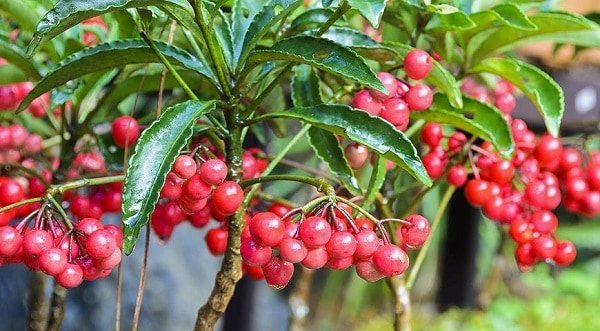

In the wild, ardisia can be a tree, shrub, or dwarf shrub. Most often, it grows up to 2 meters, although other species reach up to eight. In our homes it is a miniature potted tree with one trunk. The whole year it is considered a decorative leaf, and on New Year's Eve it is decorated with berries.
Types of flowers that are sold with us
Up to 800 species were counted in this genus. True, only a few turned out to be "tamed", and even less got into our stores.
- Ardisia crenate (krenata). The most popular type. In most photos, this is a small flowerpot, but if you grow a roll for a long time, it will grow to the ceiling. Its flowers are white or creamy and have a pleasant smell. Depending on the variety, the berries can last from several months to a whole year. There are varieties not only with scarlet, but also with cream or white berries.
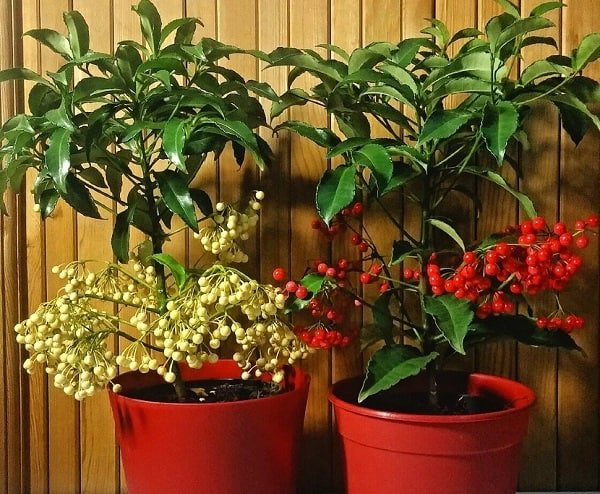

- Curly. It is named so because of the wavy edges of the leaves. This is a more compact species - it grows not up to 2 meters, like a roll, but up to 80 cm. It blooms white and pink, and in summer. Its red berries can hang from twigs all year round.
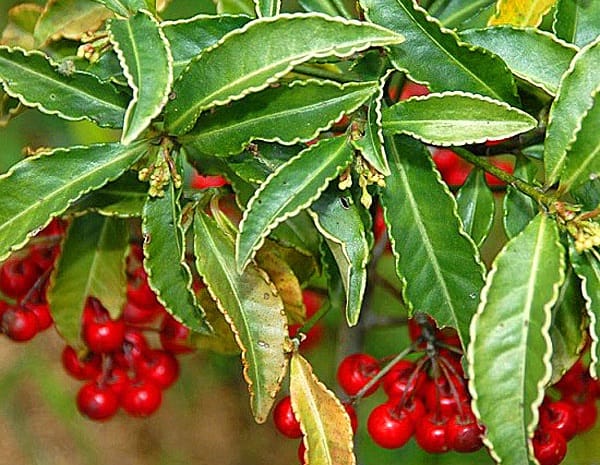

- Low. She is really squat - the tree grows only up to 25 cm (despite the fact that some leaves stretch up to 15 cm). The berries are pinkish at first, and then turn black.


- Japanese. Another low (30-40 cm) species. The bush has rounded leaves, creamy flowers, red at first and dark after ripening. The Chinese cultivate this plant as a medicinal plant - they believe that the flower secretes a substance that can fight cancer. Also in the Middle Kingdom, decoctions are made from the roots and leaves of ardisia (of various types) in the treatment of colds and infections.
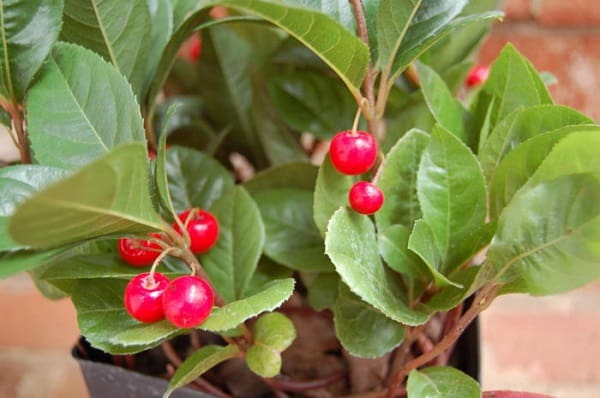

How to care?
In general, the plant is considered unpretentious in care and does not require any unthinkable manipulation. However, the basic rules of care should still be taken into account.
Watering
The main rule of watering is do not overflow the flower so that the water is in the pan. If such irrigation is carried out regularly, it leads to the death of the leaves and the death of the entire plant. In the heat, you cannot water the ardisia abundantly, you need to wait for the evening or provide morning watering. It does not harm the leaves and root system.
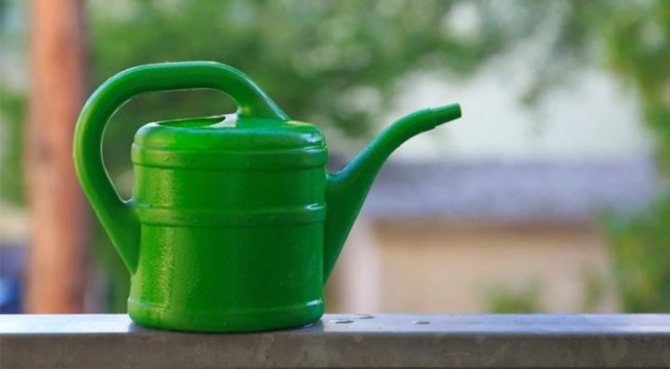

The watering regime for ardisia depends on the season. For example, in summer the plant needs more moisture, in winter it rests, so it needs to be watered, but dosed and less often. At the same time, there is no need to rush to extremes, all the more to wait for the leaves to become soft and hang: this is typical with a lack of moisture.
Cultivation
Caring for ardisia is not only about timely watering, choosing the best place and saturating it with top dressing. In addition to all this, the plant, when growing, needs to form a beautiful and lush crown. As you grow, it is important shorten branches that come out of the crown... In addition, when young shoots appear, it is necessary to get rid of weak branches, leaving only strong and healthy ones to form a beautiful tree.
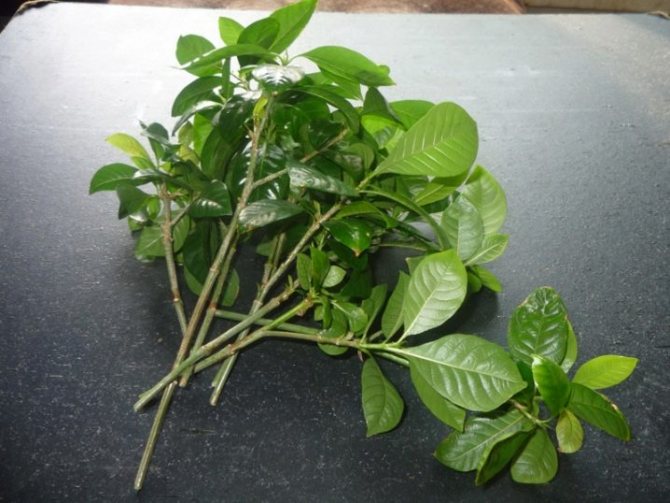

Pollination
The flowers themselves cannot be pollinated, and therefore, in order for the tree to become overgrown with bright berries, the flowers pollinate on their own. To do this, use a brush or cotton swab, transferring pollen from flower to flower. If there are not one, but two Ardisia flowers in the room, there is no need for self-pollination.
Top dressing
Ardisia is fed during development and to a state of rest. For the first time this may be needed in March, the last feeding is done in September. You can use as fertilizer universal mixture for ornamental deciduous plants, which is sold in specialized stores. Despite the prevailing opinion about frequent fertilization, you should not overdo it with top dressing, because this may not affect the health of the ardisia in the best way.
Benefit and harm
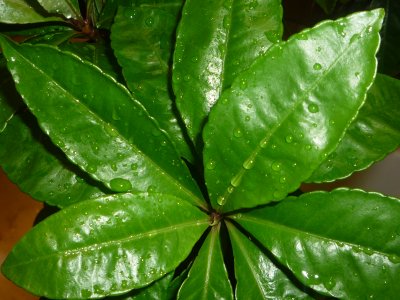

Ardisia not toxic... The berries are inedible, but if swallowed accidentally, they will not cause harm. For example, in China, the fruits are considered healing and are used for arthritis, snake bites and injuries.
Ardisia is great for decorating premises. The tree looks most beautiful in winter, so the Christmas berry will be a good gift for relatives and friends for the New Year holidays.
Photo
In the photo below you can get acquainted with the appearance of Ardisia:
Microclimate
It grows slowly, and only 2-3 years after receiving the sprout, it will be possible to admire the flowering tree. The growth rate is influenced by microclimatic conditions. The correct temperature and humidity regime will ensure good growth, flowering of ardisia and the absence of pests on its leaves. The climate in the places of its origin is tropical and subtropical, similar conditions are necessary for her at home.
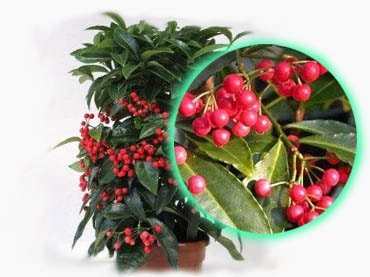

Summer is a period of active growth of this indoor tree. It grows well and blooms better at + 20 ... + 25 ° C. The humidity of the air masses should be 50-60%. If the indoor air is dry, plain water should be sprayed.
In winter, the growth of ardisia slows down and the room temperature should be around 18 ° C. This will provide a set of buds for subsequent growth. If the temperature is higher, the plant will begin to shed its berries and quickly lose its decorative properties. The air around it needs to be humidified often, since in winter it is quickly dried out by heating radiators.
The location and lighting for ardisia must be chosen taking into account the absence or small amount of direct sunlight. The plant will be comfortable in a lighted place on the window, from the east or south-east side, where the morning non-aggressive sunlight will fall on it. The most favorable growing conditions are in bright diffused light. If there is not enough of it in winter, then special lamps will provide sufficient lighting, otherwise the leaves on the tree will turn yellow.
To grow ardisia, it is necessary to ensure that there is no ventilation. The leaves of an ardisia standing in a draft will begin to dry out at the edges.
Possible problems
- Bumps appear at the edges of the leaves - this is not a problem, but the norm. Never cut them off or injure them. They are home to beneficial bacteria that help ardisia to assimilate nitrogen from the air.
- Faded foliage, the stem is stretched out - there is not enough light, transfer the flower to the south window or put it outside.
- The foliage flies around - it means that water stagnates in the soil. Remember drainage!
- Leaves turn yellow - lack of moisture or nitrogen. Spray the plant and fertilize.
- Leaves are soft, curled, brown at the edges - the plant is frozen, move to warm, fertilize.
- White spots on the leaves are sunburn. Hide shrubs from direct rays.
- Brown spots are signs of a bacterial disease. Too high humidity or stagnant water in the ground.
- Leaves brighten - this is a manifestation of chlorosis. Mineral fertilizer is required.
As you can see, ardisia requires serious care, constant supervision and considerable experience in floriculture. If you have been dealing with indoor plants for a long time, have accumulated knowledge and skills, love to take care of flowers, then growing an unusual tree with beautiful fruits will be an incomparable pleasure for you.
Botanical description
Evergreen. Belong to the Mirsin family. Grows in wooded areas of the tropics and subtropics. Distributed in America and Australia. Literally translated, the name sounds like "arrow". The corolla of a flower resembles an arrow.
Leaves are elliptical, glossy, leathery. The surface is smooth. A consistent arrangement of leaves is characteristic.In different species, the edges of the leaves are serrate, whole, crenate. Inflorescence is an umbrella or panicle. Flowers are bisexual, small, white. Less often cream or pinkish.
After flowering, a fruit is formed - a single-seeded berry. The color is red, sometimes yellow or white. Ripening lasts several months, starting in December. As a houseplant, ardisia acquires special attractiveness during the fruiting period. The berries are not edible!
Interesting information! At the edges of the leaves of ardisia, specific swellings are formed. Novice flower growers, out of inexperience, often mistake them for a manifestation of the disease. Trimming leaves with bulges is highly discouraged! Ardisia lives in symbiosis with nitrogen-fixing bacteria. Without their participation, the plant will not be able to assimilate nitrogen from the air and will die! The bulges on the leaves are the habitat of these bacteria. They are also present on the roots - they handle the root system very carefully during transshipment.
What difficulties can you face
- Attack of harmful insects. Aphids, scale insects and other "brethren" will gladly settle on Ardisia, if it is not sprayed. They will have to be washed with a cotton swab dipped in soapy water, and then the plant (and all the neighboring ones - just in case) should be sprayed with insecticide or acaricide (if ticks are introduced).
- The leaves begin to turn slightly yellow. Most likely, the plant lacks iron. Add this substance to the main food (in a chelated form - it is chelates that are well absorbed by plants).
- Only the tips of the leaves turn yellow. The flower lacks food, light.
- White spots appear on the leaf blades. These are sunburns - somewhere the rays fall directly on the leaves. Move the pot away from the window or shade the flower with a curtain.
- The tips of the leaves dry out. One of two things: either the flower freezes in a draft, or the air humidity is too high for it.
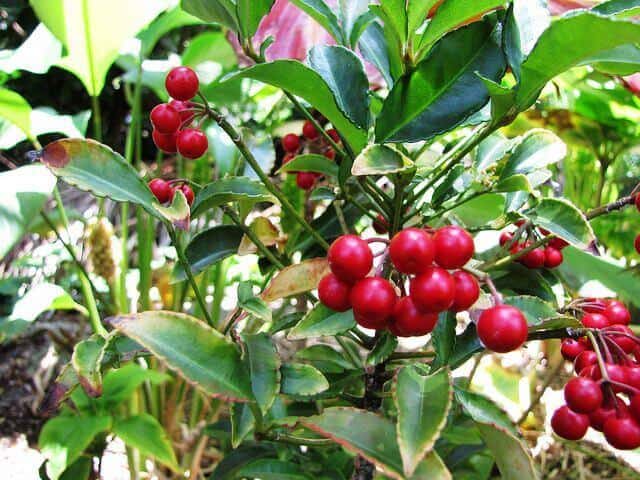

Roots / stem rot from overflow
- Flowers and berries will have to be cut, as will some of the lower leaves.
- Remove the flower from the pot, cut the rotten roots "to a living", rub the cuts with crushed coal, or even better - soak all the roots in a pink solution of potassium permanganate for half an hour.
- Spill the old pot with boiling water or the same potassium permanganate solution.
- Plant the flower in fresh soil.
- Water it only 2 days later. It is better to take not water, but an aqueous solution of "Fitosporin" - it will help against rot.
- Perform the next watering through the pallet.
Ardisia care at home
Watering for ardisia
Watering ardisia is quite standard. Maintaining a constant level of substrate moisture is the main task of flower growers. Ardisia loves stable growing conditions in terms of humidity and it is precisely the maintenance of light moisture that is the most difficult moment.
Ardisia do not like either drying out of the soil or its waterlogging. Each subsequent procedure should be carried out only after the topsoil has dried. After watering, it is better to immediately drain the water from the pallet.
Watering is adjusted seasonally. In spring and summer, they should be plentiful and more frequent, in winter they are reduced, and the moisture content of the substrate is brought to less than your ardisia is used to.
Pay attention to the water: for this plant, it must be soft, be sure to stand. Never water ardisia with too cold water: its temperature should be equal to the temperature of the air around the plant.
Top dressing for ardisia
Ardisia need a standard feeding scheme - from March to September. They are suitable for universal mixtures of fertilizers for indoor plants. It is not necessary to create an excess of nutrients, therefore it is better to feed in reduced doses, but often - every week or 2 weeks.
Pruning ardisia
For this evergreen beauty, pruning is about forming a crown. Out-of-silhouette, too elongated shoots are cut in early spring, at the first signs of resumption of growth and before transplanting.It is better not to do too much pruning - slightly shorten the branches or pinch the ends.
Pollination of flowers
Ardisia is a plant that forms the largest number of berries only with outside help or when grown in pairs and groups. To achieve the most active fruiting, after flowering ardisia, pollinate the flowers with a brush, and after a few months you will see that the plant will form much more berries.
Transplant, cultivation
To preserve the beauty and activity of Ardisia, one must not neglect the transplant. Transplant plan:
- 14 days after purchasing the flower.
- Annually for 3 years.
- In the fourth year and beyond, do not transplant, but only replace the substrate at the top of the pot.
Ardisia is transplanted in the spring months. They use the transshipment method (so as not to damage the beneficial fungi on the root system). The thickness of the drainage layer is not less than 1.5-2 cm. Expanded clay, perlite, clay shards can be used as drainage. Perlite can also be mixed with earth, it makes the subtrate more porous. Attempts to transplant Ardisia by cuttings are unsuccessful. It does not always take root, but you can try. To do this, cut off the tops of the shoots, the most hardened. Dry the cut part a little and place it in a liquid that stimulates the formation of roots for a few seconds. Then the cutting is planted in the ground and closed like a greenhouse. The temperature in the "greenhouse" should be about 30 degrees. A young plant grows up to "independent" in 2-3 months.
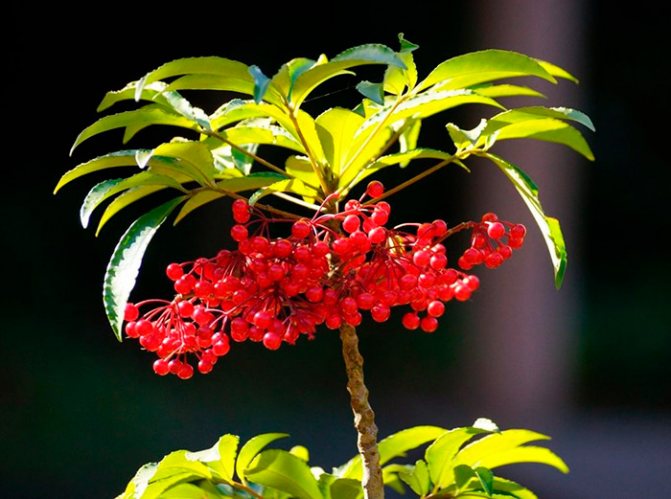

Seeds are planted in March, also creating greenhouse conditions. It is necessary to sow in a moist substrate, laying the seeds to a depth of about 1.5 cm.
Ardisia is an excellent decorative option for an indoor flower. In summer it is beautiful with glossy greenery, in winter it pleases with juicy red berries, recalling the summer.

